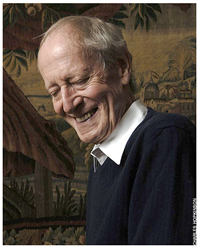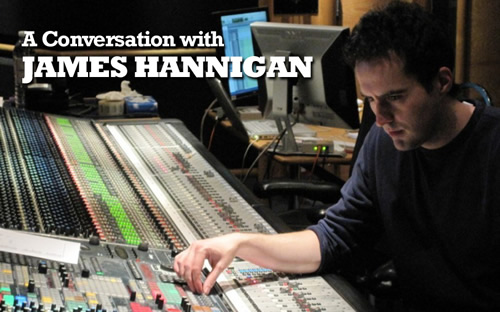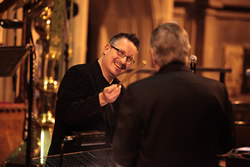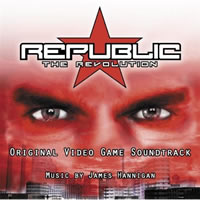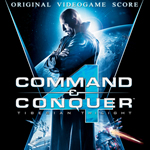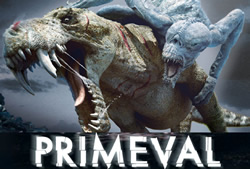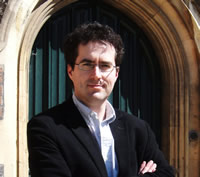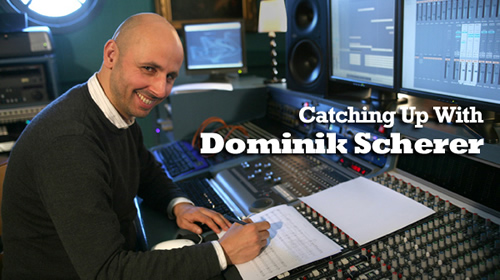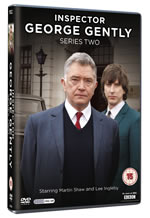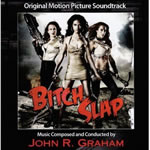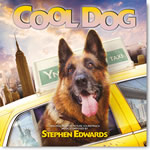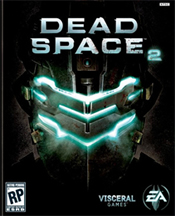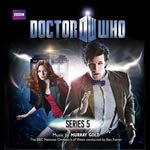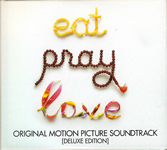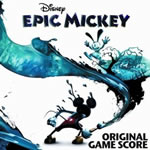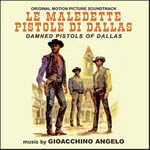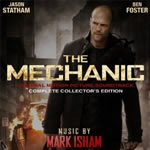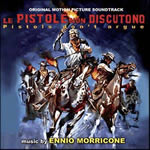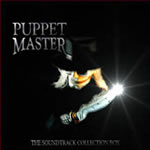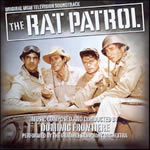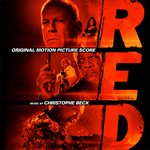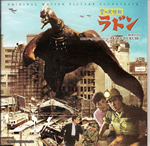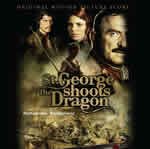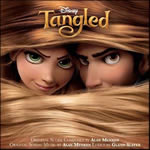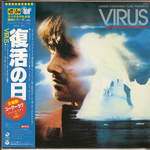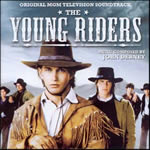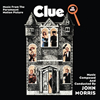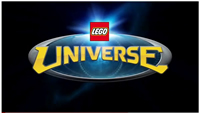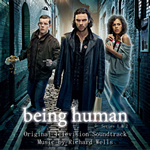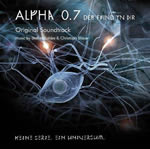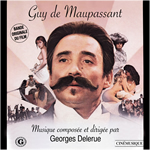
 |
Soundtrax: Episode 2011-01
January 31st, 2011By Randall D. Larson
R I P John Barry
I heard the sad news that John Barry died just as I was finishing up this column. I was aware he was ill but am still shocked that he is gone. Famous for his work on BORN FREE, MIDNIGHT COWBOY, DANCES WITH WOLVES, OUT OF AFRICA, and the James Bond films, died Sunday, January 30th, of a heart attack. He was 77 years old. Born John Barry Prendergast in 1933, the York-born musician first found fame as leader of the John Barry Seven. His arrangement of Monty Norman’s James Bond Theme led to him composing scores for 11 films in the series, among them GOLDFINGER and YOU ONLY LIVE TWICE. His work saw him win five Oscars, while he received a BAFTA fellowship in 2005.www.bbc.co.uk/news/entertainment-arts-12321610“There’s a beautiful phrase: ‘If something is written from the heart, it goes to the heart. That’s what it felt like when I heard John Barry’s music for the first time,” composer David Arnold told the BBC. “I saw my first Bond movie, YOU ONLY LIVE TWICE, when I was about eight years old. It was the moment I realized what I wanted to do - to be in a dark room and hear that sound. It felt like it went directly to the core of who I was. I felt a kinship with it, and I am sure there are millions of others who have the same story.” - www.bbc.co.uk/news/entertainment-arts-12324183
Actor Alec Baldwin, who along with Kim Basinger, presented Barry with his Oscar for DANCES WITH WOLVES, wrote a special tribute to Barry for the Huffington Post, saying, “I wanted to take an opportunity to mourn the loss of one of the greatest composers in motion picture history.”
- www.huffingtonpost.com/alec-baldwin/john-barry-dead-remember_b_816570.html“From the first James Bond film, DR NO in 1962, he revolutionized film music,” wrote Barry’s frequent lyricist Don Black in a remembrance for the UK’s Daily Mail. “He was a musical dramatist whose gift was matching music to film. John had a way of connecting emotionally with a story — an understanding that resulted in the most beautiful and appropriate music — a skill that was in many ways at odds with his brusque Yorkshire roots… He was immoveable about his music, and didn’t suffer fools gladly. That inner confidence helped imbue his music with the elegance it is famous for. He had a signature style — lush strings and orchestral swells — that made his songs instantly recognizable… He may have gone, but the gift of his music will be with us for decades to come.”
- http://www.dailymail.co.uk/tvshowbiz/article-1352395/James-Bond-composer-John-Barry-remembered-Love-lunches-music.htmlJon Burlingame’s obit and summary of Barry’s career appeared online in Variety, noting that Barry was honored last October with a lifetime achievement honor at the Ghent Int'l Film Festival, which staged a concert of his music performed by the Brussels Philharmonic Orchestra. Barry, however, was too frail to attend. - www.variety.com/article/VR1118031189?refCatId=13
Daniel Schweiger’s remembrance of “The Ten Best Scores of John Barry” has been posted online at Assignment X. “The passing of composer John Barry Sunday at age 77 represents the true end of unabashed, symphonic lyricism,” Schweiger wrote. “There were few composers who had his way with melody. Even the most explosive action of Barry’s Bond scores had a slow, hypnotically seductive rhythm. It was a lyricism that made generations fall in love, not only with their dates in the darkened theater, but with the lush possibility of film music itself.”
- www.assignmentx.com/2011/in-remembrance-the-10-best-scores-of-composer-john-barry/The L.A. Times printed a nice obituary of Barry but mistakenly and sloppily ran somebody else’s photo in place of Barry’s, raising the disgusted ire of many film-music savvy readers. www.latimes.com/includes/sectionfronts/AA1.pdf
The Yorkshire Press, from Barry’s home town, posted a series of online tributes:
http://www.yorkpress.co.uk/news/johnbarry/
Barry was one of the giants of film music – and I met many a fellow child of 60’s rock and roll who, if they hadn’t gotten into film music through the Western scores of Ennio Morricone, did through John Barry’s 007 scores. He was their conduit from rock to orchestral film music, and worlds of music expanded with his example. For a while, with his James Bond music, Barry defined romantic action scoring; later he defined film romance with scores as sultry smooth and gently rhythmic as anything Hollywood has ever produced. John was one of the best and had a singular style and musical sensibility. He leaves a tremendous legacy behind but his vacancy leaves a rift in the musical cosmos that can never be filled.“If music doesn’t sing, or dance, or have an interesting harmonic concept, then it shouldn’t be there at all. A film score should burn with its own fire, not merely glow in the dark like a pretty charcoal,” Barry told Arthur Knight of the Saturday Review in 1972. His music, indeed, has burned with a rare and singular flame.
And it continues to blaze. -rdl
(John Barry 2008 photo by Charles Hopkinson, via www.last.fm/)
Burlingame's longer tribute to Barry for the Film Music Society can be read at: www.filmmusicsociety.org/news_events/features/2011/020211.html
Award-Winning composer and five-time BAFTA nominee James Hannigan is active in a variety of entertainment industries. Among his many credits are games such as Command and Conquer: Red Alert 3, Harry Potter and the Deathly Hallows Part 1, Command and Conquer 4: Tiberian Twilight, Lord of the Rings: Aragorn’s Quest, Harry Potter and the Order of the Phoenix, Cloudy With a Chance of Meatballs, Harry Potter and the Half-Blood Prince, and many others, including various EA Sports titles and others - along with contributing to TV shows such as Primeval. In 2000, James won a BAFTA Award with Electronic Arts for Theme Park World/Sim Theme Park (EA/Bullfrog Productions) and picked up the IFMCA (International Film Music Critics Association) award for Best Video Game Score of 2009.
– via www.jameshannigan.co.uk/Q: Music for video games has evolved from simple, repetitive rhythms for game play into truly epic soundscapes that embody drama, action, and an engaging scope of theme-and-variation that allows games to achieve a very cinematic musical sense. How have you seen the art and science of game music change over the years you have been scoring the medium – and how have you tried to stay on the cutting edge of music for the scores you write?
James Hannigan: When digital audio entered into games around the early to mid-90s, what you could do with music production and playback in games changed very rapidly as it became possible to stream almost any recorded music – say, from CD or Hard Disk. So, very quickly, the means of producing music for games, films, and TV largely became the same in pure production terms, and that remains true today. For example, composers working in any industry now will most likely be using a combination of tools such as Cubase or Logic for sequencing, Pro Tools or Nuendo for audio, Sibelius or similar for creating soundtracks, scores, and so on. But I feel this technological relationship does somewhat overlook some of the essential differences between scoring for games and linear media forms such as film and television. It’s almost certainly the case though that, over the last ten years or so, the language of film music has entered into more and more games – most often belonging to the action/adventure/horror genres - and that many games are seeking to offer so-called ‘cinematic’ or filmic experiences. At the same time, I think it’s important to remember that there are other games out there being made that occupy a very different and unique space of their own. I’m thinking of games such as, say, those in the Mario series or similar, those on social networking sites, handheld games, sports, strategy or racing games – and many others that are generally harder to equate with other forms of entertainment. Although film in general is a great model when it comes to music for narrative support in particular, and film music is useful as a language for emotion, it’s really just one model and one reference point for music in games as a whole.
The function of music in games can differ somewhat from film and TV as well, in the sense that it serves a different kind of ‘viewing’ experience. The player of a game is both an audience to and a participant in the game’s reality and that has an effect on how you can treat them with music. For example, do you choose to see them as an outsider to the experience watching a story unfold, or do you treat them as an occupant of the game world (in other words, as someone in a film, rather than watching one)? It’s a real dilemma sometimes! Even the perspective the player takes on events in a game can be significant. For example, if the game is in the first person, it implies the player belongs to the onscreen reality, and in that case music may need to be more restrained and embedded in the environment or atmosphere, existing less for an ‘audience.’ A game in the third-person, on the other hand, seems to imply the existence of something not unlike a movie camera looking onto the action as directed by a filmmaker or games designer, and perhaps in that case, a more film-like score would be appropriate, treating the player as an audience. Other games don’t even have a set story – such as strategy, open world games, or simulations – and they may not need emotionally manipulative music at all to be engaging. For example, would music added to a flight simulator game in any way make the simulation more realistic? It would only lessen the sense of ‘being there.’ So, although many games are more like films now, there are many examples of how they continue to be just like games! It’s interesting to note that one of the industry’s most successful and thrilling game series, Grand Theft Auto, manages to engage players with hardly any non-diegetic music at all, relying on source music instead – heard from car radios, etc.
Q: When scoring a video game based on a movie, such as your award-nominated and -winning scores for the HARRY POTTER games, the ARAGORN’S QUEST game, CLOUDY WITH A CHANCE OF MEATBALLS, etc., how do you deal with those film series’ very recognizable music and allude to or stray from that musical sensibility in your own game scores? Do fans of the movies expect a similar musical sense in the game?
James Hannigan: This is an ongoing challenge when it comes to scoring games that are film tie-ins. Some day, I hope things move to a situation where the political and legal frameworks of the game and film industries merge more and allow for the same composer (or composer’s team) to handle production of both scores, but for now it’s a tricky area. On the one hand, there is an expectation – both by the audience and probably the publisher of the game – to try to follow the film’s lead, or vice versa as the case may be. Very often this will merely be a stylistic similarity, while at other times the game’s music may actually include some licensed music from the film, or music derived from the film’s score. In the case of the games you mentioned though, the scores were created separately and, very often, before the films in question were even scored. With the recent Harry Potter games, there has been the occasional reference to John Williams’ Hedwig’s Theme though, which I think goes some way towards binding things together.
Q: Is it somehow easier – or more difficult – for you to write a purely original game score that has no association with a movie or other medium? In this case, what is your starting point – what do you look for in the game to serve as the central core of your music?
James Hannigan: I think it’s the ideal for any composer to be given the opportunity to be themselves, as this is ultimately what will lead to them developing and popularizing their own ‘voice’ as well as giving them an opportunity to create a unique musical identity for something. In my case, I’ve always tried to put a ‘me’ spin on things when possible, even in a film tie-in context, but there have also been projects allowing me to determine the style and feel of music from the outset. One such project was Republic: The Revolution. I think themes often allow a composer to put their stamp onto a project as well, and I do really enjoy writing a memorable main theme when I can! Even if it’s in a known or established style, it’s still possible to inject a lot of yourself into those themes and to set the tone and create a framework for the rest of the music. For example, I was quite pleased with themes like “Soviet March” and “Yuriko’s Theme” from Command and Conquer: Red Alert 3, the Evil Genius theme and several from the recent Harry Potter titles in particular.
Q: How does the interactive nature of video games – where your music must be prepared to accommodate various directions of gameplay – affect your planning and composition of the music? In terms of theme-and-variation, do you need to be especially flexible in the music you write so that it can manage the kinds of musical permutations the gameplay may demand?
James Hannigan: It often has a bearing on how you compose, as you may have to deliver music in a way that complies with the ‘interactive music’ system in use. But there’s often a trade-off between how clever you get with interactive music and how satisfying something is as coherent, linear music. So it can be a fine line to walk in games, maintaining musicality and flow with the need to chop and change music in ‘real time.’ It’s also often difficult to work out what is actually motivating music in games, as you are rarely led by the visuals, moment by moment, as would be more the case scoring to picture. Music is usually equated with the ‘game state’ which more or less means it’s based on the situation you are presently in, and you keep it flexible enough to transition to other ‘situations.’ But that still leaves a lot of room for interpretation.
Q: You’ve scored a few games in the COMMAND AND CONQUER series. How have you developed your scores from the tone they had before you came in, and how have you made the series your own, musically, since then?
James Hannigan: In most of those cases the brief wasn’t to be particularly like earlier entries in the series. Of course, there was the occasional nod or stylistic reference, particularly with some of the rock-based music used in Red Alert 3, but other than that the scores have been quite diverse and varied.
Q: What’s been the toughest game for you to score thus far, and how did you meet the challenge? And likewise – what’s been your most rewarding experience in game scoring?
James Hannigan: I would say that Harry Potter and the Order of the Phoenix was the hardest and most rewarding for me, as I was entering into a new world, musically speaking, and there was a considerable degree of expectation surrounding what I would come up with. But sometimes you just have to face these challenges in order to develop, and it can be healthy to work against your habits. Going through the challenge of expanding your knowledge and improving your technique can be tough but rewarding in the sense that it all feeds into your overall creative process, fires off new ideas and often takes you down new roads in life.
Q: Game score budgets seem to accommodate large orchestras and choirs even better than a lot of films do. What kind of budget challenges have you faced – or embraced! – in your scores and what is your technique of using orchestras, choirs, and electronics to create the most potent and propulsive music for video games.
James Hannigan: I think it’s certainly the case that some music productions for bigger games are better financed than those of many films and, budget-wise at least, already put a lot of TV music production in the shade. But, of course, there are many games that are severely underfunded as well. Some time ago, I ended up part-financing the orchestral production of one game, and a lot of people thought I was crazy for doing it. But I was just trying to see the bigger picture and move things forward a bit – both for the project and for me personally. The score went on to get a BAFTA nomination and the music became useful as showreel material, so I don’t regret doing it at all. Sometimes you have to take a risk, but I don’t think I’d do anything like that again.
Q: The viability of game scores as equally potent works of art as film scores (and concert music, despite the protestations of classical purists!) has been justified by concert performances such as GameCity last October, where your music was performed live. How have you found the acceptance of game scores among the non-gaming public – or have they yet to discover what gamers have long appreciated about video game music performed apart from the games themselves?
James Hannigan: In the face of the evidence, I don’t see how anyone can really deny the significance of the games medium now, or overlook some of the better music created for games when actually presented with it. When people do dismiss games, or make assumptions about game music, I think it’s mostly just the result of prejudice or based on perceptions and out-of-date information. I must say, I haven’t actually encountered anyone, of any age, who outrightly dismisses the validity of games or games music in a really hostile way! The problem I do notice though is that the media will insist on classifying games as ‘technology’ rather than as art or entertainment, and refer (endlessly, it seems) to the ‘bleeps and bloops’ of games, and that doesn’t help!
There will always be seriously minded people who believe they can define art, or who dismiss anything created within a commercial context (including film music) and who feel they can determine for everyone what is legitimate and what isn’t even worthy of attention. But those people aren’t really the target audience for games or games music, so who cares? I would, however, like to see a little bit more attention given over to games music by the media, and more air-time given to such music on the radio and so on. I really can’t see why that shouldn’t happen now.
To go back to this issue of how the media continues to classify games as ‘technology’ for a moment, I find this completely misguided and I can’t see the justification for it any more. To say that a game is a piece of technology because it requires a games console is almost the same as saying a film is technology because you need a projector or DVD player to view it. It’s an example of how old habits die hard when it comes to media values. Many do still see games as emanating from the computer or ‘software’ industry, which may have been the case a couple of decades ago when the industry first emerged, but this does rather overlook the very creative individuals working in the industry, creating the games and the content that goes in them.
Q: In addition to scoring games you’ve also composed additional music for the 3rd series of the hit British series, PRIMEVAL. How have you worked with regular series composer Dominik Scherrer and his material?
James Hannigan: I scored various episodes and, of course, was mindful of working within the stylistic framework established by Dominik.
Q: Where do you go from here? What projects do you have coming up that you are able to discuss – and where do you think video game music will be in another five or ten years as it continues to evolve along with technology and gaming aesthetics?
James Hannigan: I am currently working on EA’s Harry Potter and the Deathly Hallows, along with another action-adventure title I’m unable to discuss. As to where games and game music are going, I think the only way is up. Games aren’t going away and it’s highly likely they will grow in sophistication and become increasingly distinctive and recognizable as an art-form. But I think it’s also true that the industry will fragment, as happened with film and TV, and there will be different sorts of games for different markets and a lot of fragmentation going on. In all honesty, I don’t know if anyone in games or the wider world really knows where things are heading at the moment, but I’m sure almost everyone believes games are here to stay and are likely to grow in significance.
For more information on the composer, and for plenty of soundbytes, see: www.jameshannigan.co.uk
Thanks to Greg O’Connor-Read for help in facilitating this interview and procuring the images.
I first interviewed Dominik Scherrer for my Feb 20, 2010 column, mostly discussing his work for the British sci-fi time-travel series, PRIMEVAL. I recently had the opportunity to exchange emails with him again, bringing me up to date on his work.
Q: You’ve continued to score the MARPLE series, which is going on some 20+ movies now, isn’t it? How has its music developed from its inception to where it is now? How have you been able to keep it fresh and keep it active as the show has progressed, while maintaining a familiar musical signature?
Dominik Scherrer: Scoring MARPLE is less like scoring a series but rather a number of individual films. Each film has a different director, director of photography etc, and therefore deliberately a different tone and aesthetic. For example directors like Nicholas Winding Refn (PUSHER TRILOGY, BRONSON, VALHALLA RISING) and Tom Shankland (THE CHILDREN, WAZ) have a very different take on Agatha Christie compared to let’s say Andy Wilson (THE FORSYTE SAGA, GORMENGHAST). Therefore each film has its individual musical style as well. The only character who re-appears is Miss Marple herself, so there is a musical language that comes with that character. However, it’s no longer just two to three themes, but as we got to see her persona from different angles, the Marple themes expanded too.
Q: Do you find Marple still as fun and creative and challenging as when you started?Dominik Scherrer: Yes, partly due the individuality of the films, and in a way, it’s perhaps become more enjoyable. In the beginning of the series there was a certain need to pay homage to classic directors and composers, for example Hitchcock and Herrmann. The series then progressively found its own voice. There is a bit more freedom now, more room for risk. The entire team in postproduction/re-recording, sound design and the music department is now well established and works like clockwork. So it’s a bit less (only a bit) stress now, and a bit more fun, and quite a bit more creative!
Q: Another detective/whodunnit series you began scoring this year was Inspector GEORGE GENTLY. What brought you into this show and how did you integrate your own music into what Ray Harman had established before you on the series?
Dominik Scherrer: The ironic thing is that PRIMEVAL has moved its production to Ireland, which made it difficult for me to continue scoring it but GEORGE GENTLY is a production that has moved its production from Ireland to England, so it made sense to swap over! The episodes that I have scored so far were perhaps quite different to the previous series, so it felt right to introduce new themes.
Q: Have you been able to convey your own voice, musically, into the needs of GEORGE GENTLY, and what fresh opportunities or challenges has this show given you?
Dominik Scherrer: I’d like to think there is some of my voice in there. Peter Flannery is a great writer - and there is a sense of understatement in the writing of the emotional scenes, which is an inspiration to the music as well. Often some really big story beats are only very sparsely scored. Then the music can flourish again elsewhere without over-egging the drama. The score generally has two faces: One is a more strings-based sound, more filmscore like, and the other face is more 1960s period - which is the fun bit: I really wanted to avoid it to sound like a 1960s soundtrack. When you like at a British crime-movie from the 60s and it has a contemporary 60s score, it can feel quite dated to us, unless it’s something almost avant-garde such as GET CARTER. So the key was to be inspired by pop music of the 1960s, and perhaps the grittier, less polished kind – perhaps less Beatles but more Kinks – the stories are set in Northumberland, far away from swinging Carnaby Street in London.
Q: What new musical challenges and opportunities have your scores for U BE DEAD and CHRISTOPHER AND HIS KIND and the like provided you? How are you managing the workload and keeping the music for all of these projects progressing and interesting?
Dominik Scherrer: U BE DEAD was interesting as it was a dramatization of events that happened a few years ago. It’s a crazy stalking story that began with sending death threats via text messages. We all know the stuttery interference sound that may come through a stereo when a cellphone is next to it and received a text message. Out of this rhythmical sound evolved the main motif of the score - at the beginning the sound gradually gets replace by the strings who play the same rhythm. So yes, it was interesting and challenging, as was the story, which was a scary proof that the truth is stranger than fiction.
It was great working with director Geoffrey Sax on CHRISTOPHER AND HIS KIND. It’s an adaptation of Christopher Isherwood’s (CABARET, A SINGLE MAN) autobiographical story in hedonistic Weimar Berlin. It was nice that everyone agreed that doing the obvious – a mix of “Cabaret” and Kurt Weill – was not original enough, and it was better to create something more contemporary.
At times it’s of course daunting to handle these projects. For example on CHRISTOPHER AND HIS KIND I started at very short notice – and I was in Paris playing at the Pompidou Centre for the week. So in the end there was less than two weeks to complete it. But then again it can be quite a bit of fun to do something very quickly. Of course all this is only possible with a really good team, here at my studio and also at Angel Studios London where I generally record.
New Soundtracks Releases of Note
BITCH SLAP/John R. Graham/John R. Graham
If you’ve seen BITCH SLAP and all you really remember about Rick Jacobson’s delicious heist-and-ho’s exploitation movie, I mean besides the kick-ass babes, is the hard rock music on the soundtrack, have a listen to John R. Graham’s score, which has been nicely preserved on CD available from amazon, CDBaby, and other sources, and remember the epic music that supported the film’s action so well that you didn’t even know it was there. From the opening moments of the film and its massive, apocalyptic orchestral-and-choral ascent that accompanied the camera pull-back onto a scene of seeming cosmic destruction that turns out only to be the small patch of desert on which this incredible confrontation between babes and guns and vengeance and judgment played out, the music elevates the film and its plethora of slo-mo and fast-mo Battle Royale moments into something gargantuanly stupendous. Most of the film, as noted, is dominated by hard rock and southern rock songs, but in between Graham has laced the soundtrack, when it can be heard above the atomic-punch of fists into skin and the tectonic prowess of mighty automatic weapons pealing at cataclysmic decibels, gave the film a splendid if not somewhat graceful forward speed. Away from the film, on CD, the score can be better appreciated on its own, ranging from the sweeping epic of “Every Wickedness” and “Clambake” to the wicked verve of “Bitch Slap Theme” as director Rick Jacobson’s camera catches every molecule of motion as, high-heels first, the three jaw-dropping gorgeous heroines emerge from the confines of a black 1963 Ford Thunderbird (which itself is represented by a twanging country rock instrumental), the piano poignancy of “Fuchs Confesses” to the satirical James Bond riff of “Alpine Hi-Jinks,” the Asian vocalism-infused rock vibe of “Pinky’s Ride” to the chilling strings suspense of “Tattle Tale” and the pensive electric guitar arpeggios of “Camero Abuse,” not to mention the full-scale percussive action rhythms of “Hel No,” “Trunk Man,” “Prison Punch-Up,” and “My Old Flame.” And, yes, the Zimmeresque marcato strings and epic synths make their presence welcome in a few cues as well. In its mix of synths, samples, and southern rock, it’s a powerful score that’s every bit as varied and fun as the film it accompanied.
Info on the composer and a wealth of soundbytes can be had at: www.johngrahammusic.com
COOL DOG/Stephen Edwards/MSM
Taking a break from scoring films about feasting monsters and sharks in Venice, Stephen Edwards rejoins director Danny Lerner, for whom he scored 2007’s FINDING RIN-TIN-TIN (soundtrack also released by MSM – see review back in the 10/9/08 column), for a new family film. Edwards convinced Lerner for the need to use a live orchestra on this score, and the result is an authentically acoustic symphonic performance of an eloquent score. “It’s a family film about a dog and the warmth and human quality of an orchestra is a perfect way to convey the heart and emotion of the story,” Edwards said. Moviescore Media’s soundtrack release comprises 21 tracks. The score reflects both the spirit and warm humor of the story, using a handful of attractive themes. It’s the kind of music you’d expect from a film like this, but Edwards gives the story a sense of verisimilitude in a score that is both honest and earnest. His main theme has a sense of carefree playfulness about it as high-end piano notes gambol amidst an active regime of pizzicato and stroked violins, the melody soon doubled by winds (“Theme,” “Left at Zoo”). The motif reflects the inquisitive cheer of the dog, while darker tremolo strings accompany darker moments in the story. A subordinate theme for trumpet reflects the noble, heroic aspects of the dog as they come into play in the story (“Rathole Apartment”). “No Mutts,” “Raney in Train,” “Mayhem Flour,” and “No Licorice” are a little more cartoonlike, catching action and providing a kind of “antic” sensibility for the romping hero-dog, the latter bringing the main themes into play as well. The cute “Do You Allow Mutts” provides some cute bassoon figures plodding around tremolo strings, furtive pizzicato, and a touch of xylophone; the same motif recurs in “The Warehouse” and becomes a motif for skulking-and-playing interludes. Edwards tugs the heartstrings in “Raney Croaks, Uncroaks” and then goes for the Gold in “Raney the Hero,” which culminates in the expected Hollywood happy ending crescendo. A likeable and pleasing score.
DEAD SPACE 2 (gamescore)/Jason Graves/Electronic Arts Music
BAFTA-winning composer Jason Grave’s score for this horror videogame deftly reflects the journey of its hero, Isaac, into dementia and nightmare. The soundtrack album is available on iTunes and other sources, as is Graves’ score for the first game. That first game has been called “the scariest game ever made” and Graves’ score received accolades in helping to make it so. (See my interview with Graves in the 4/9/09 column). Immersing listeners into a sonic environment for real orchestra enhanced by various threads of electronica, Graves intensifies the nightmarish journey undertaken by Isaac and the player. “The score really runs the gamut as you play through the game,” said Graves. “There are much bigger and scarier pieces along with quieter, more personal moments to counterbalance them. I wrote for string quartet to portray Isaac’s vulnerable side. It’s quite the emotional arc, but of course still done in a very Dead Space way.” Thatstring quartet concerto, “Lacrimosa,” is woven throughout much of the score dependent upon the direction of the gameplay and also appears on its own in a 7:36 track that concludes the album. Recorded at Skywalker Sound, the score has a marvelous sonic dynamic and expert performances and mixing. It’s a dark listening journey on compact disc, mingling aggressively suspenseful passages (“The Cassini Towers” is a brutally scary cue) with frenetic action figures that encourage the player to get a move on. On disc, the score makes for a fine progressive journey all its own, from eerie mysteriosos to blaring, percussive dissonances. Graves introduces his pounding panic theme in “Welcome to the Sprawl” and develops it further in “Much Ado About Necromorphs,” a heavily tromping conclave of drums over which a brassy motif sounds like a thick, ropy serpent nesting in atop a bristling forest of craggy thorn trees; succeeding cues will take this same theme and raise the dead with it. “Awesome Hulk” (and we’re not talking about Bruce Banner here) takes the quaking percussive motif and heaps a hysteria of strings onto it before dissolving into a subdued catch-your-breath weaving of low strings. “Come Rain or Come Convergence” is a calm respite from the shamble-and-grab music, a lovely piece for soft strings and piano, although of course it ends on a severe tone of apprehension through an ascending entwinement of high violins; “Canonicle Aside” is another quiet piece initially heard in the opening of “Welcome to the Sprawl;” it is an interesting interaction of cellos, very reflective and sonorous. The score makes for a fine adventure in listening all by itself. With two great horror game scores it’s surprising (but typical) that Graves wasn’t brought in to lend the same kind of score to the pair of animated video features, but that’s Hollywood.For soundbytes and more information on Jason Graves, see: http://www.jasongraves.com/
For an audio interview with Graves on Dead Space 2, see: http://scorenotes.com/
DOCTOR WHO Series 5/Murray Gold/Silva Screen
Murray Gold’s music for the fifth season of the revived DOCTOR WHO, released digitally and on CD by Silva Screen, is as breathtakingly melodic and compelling as that of the first four series (=seasons) – see my enthusiastic reviews in Soundtrax columns for 2/27/08 (Series 3), 1/28/09 (Series 4), 11/15/10 (The Specials). Series 5, containing 13 episodes, introduced Matt Smith as the Eleventh Doctor; Silva’s 2-disc soundtrack contains music from each episode – most with two or three cues, but some with many more (“The Eleventh Hour,” the season pilot, with 11 tracks, “The Vampires of Venice” with five, “The Lodger” with eight, and the 2-part closer, “The Pandorica Opens/The Big Bang” with a pleasing 22 tracks). While each episode maintains its own musical identity or feeling, all are scored around a similar stylistic sensibility, defined by the composer back in WHO’s 2005 relaunch. For Series 5 Gold provides a new arrangement of the classic Ron Grainer title theme, and presents a brand new theme for the Eleventh Time Lord and his assistant, Amy Pond. Capturing an agreeable sound with full orchestra and choir, Ben Foster once again conducts the BBC National Orchestra and Wales and Crouch End Festival Chorus with a powerful vigor. I can’t get enough of Murray Gold’s melody- and harmony-based compositions, and Series 5 displays what’s been so wonderful about Gold’s DOCTOR WHO music vividly. The season opens with “Down to Earth,” a thundering, aggressive orchestral cue that gets Doctor Eleven into the midst of things in a hurry. “Can I Come With You?” resembles in form the style of solo vocal over strings that was “The Doctor’s Theme” in Series 2-4, only the melody is different and emerges into a wholly different musical motif for The 11th Doctor, who is characterized by a flowing, rhythmic motif that is completely engaging. This new theme will recur throughout this series, most prominently in “I Am The Doctor,” the premier episode’s musical moment of triumph and victory. The album’s previous track, “Zero,” provides an equally compelling arrangement, punctuated by sparkling trumpet blasts, eloquently reflecting the Doctor’s self-confidence and action-oriented daring do, while “The Man In The Box” speaks more to his inner-Doctor, with a solo voice à la the much more melancholy “The Doctor’s Theme.” All three of these tracks are milestones on DOCTOR WHO music and worth the price of the album by themselves. The Doctor’s assistant, Amy Pond, is represented by a lyrical and almost breezy melody intoned by solo female melisma, wistful and lonely, but mirroring the character’s integrity and commitment to the Doctor. These themes carry much of the music but, again, each episode retains its own musical character. “The Time of Angels,” for example, features a scary electronic sound collage that is quite frightening and wouldn’t be out of place in a contemporary horror film (or a Dead Space video game); the premiere contains a splendidly comical scherzo in “Fish Custard;” “Signora Rosanna Calvierri” from “Vampires of Venice” is awash with sublime violin interaction and a mesmerizing, undulating loveliness that progresses into a broad, rhythmic structure; while the episode’s closing, titular cue provides a vaguely HARRY POTTEResque flavor through prominent xylophone and choir that itself progresses into a massive, Gothic choral chant with crashing orchestrations and its own deliberate cadence; “Cab for Amy Pond” is a relentlessly propulsive jabbing action track for strident strings and pounding percussion, with an epic choir entry near its end; “This Is The Dream” from “Amy’s Choice” intermingles delicate “backwards masking” inserts, bent and reflective chords, and percussive nuances into a rolling, nightmarish soundscape; the series finale’s “Words Win Wars” reprises the new Doctor’s theme in a spectacular overture with some simply splendid orchestrations. Once again DOCTOR WHO sets the Gold standard in television music and few series scores, on either side of the Atlantic, come close to matching its lyrical grace and stunning expressive eloquence.Reportedly, iTunes UK is offering two bonus tracks and a digital book download, as they did with the Season 4: The Specials album last year; US iTunes has yet to offer the album digitally; amazon has the mp3 album but not the bonus tracks. (Note: Early release copies of the album have a very brief drop out in “I Am The Doctor” at 3:51, which almost sounds like a brief pause in the orchestra; reportedly Silva Screen will replace these error copies with a corrected disc if you contact them by email [info@silvascreen.co.uk]; even so it’s barely noticeable even when you’re listening for it).
EAT PRAY LOVE/Dario Marianelli/Monkey Wrench Records
While the songtrack album is the only one you can get on amazon, Monkey Wrench Records has issued a deluxe 2-CD album that includes 8 tracks (18 min) of Dario Marianelli’s score on a separate disc, available, exclusively as far as I can tell, from the Home Shopping Network (www.hsn.com). The music is exquisitely sublime. In “The Medicine Man,” the composer sets up a soft, somewhat gamelan-like, percussive sound pattern around which floats an airy and wistful acoustical melody for winds and strings, with a recurring cross current of stroked violins. “Suzie Creamcheese” reprises the opening theme in an environment of Indiana sitars and tablas, its violin voice taking flight gloriously; the burbling gamelan gonging is especially at home in the vibrant thematic replay of “Enjoy Bali,” while in “It’s Time” the percussion is replaced by a piano as the main theme wafts sadly and expectantly in a slow string arrangement. The world-music sensibility that provides the score’s backbone refers to the round-the-world journey taken by the story’s protagonist to “find herself” while recovering from a painful divorce, and the music serenely evokes the mixed emotions that her past experience and her exciting exploratory excursion convey as the story plays out. “Goodbyes” is an especially poignant melody for strings that is every bit as emotive and bittersweet as its title might suggest. “Blue Tiles” closes out the score with a sparkling, effervescent arrangement of the main theme. A thoroughly pleasing score.
The deluxe edition is available from hsn.com here
EPIC MICKEY/James Dooley/Disney Records
This lively game score, released digitally through iTunes and amazon, is both enchanting and compelling. This platforming game for the Wii™ console propels the player, as Mickey Mouse, into Wasteland, an alternate world made up of Disney’s forgotten creative efforts, and is given the power to wield paint and paint thinner to dynamically change the world while determining Mickey’s path to becoming an epic hero. Dooley’s sampled orchestrations paint a substantially dark picture of Wasteland. It’s as if he reached inside the throat of happy Disney music and yanked out its smiling gullet, turning those happy tunes entirely inside-out. Thus Dooley has provided twisted versions of the Mickey Mouse Club Theme, “It’s A Small, Small World,” and FANTASIA’s “Sorcerer’s Apprentice,” painting them in tones of sepia and olive and black – but the music is anything but drab. Dooley’s score puts a broad frown on the Happiest Place on Earth, built around a central theme for Mickey that’s kind of a morose waltz figure and a ton of excellent new material that really captures the darkness in brightly painted Gothic hues. Dooley also gets to riff a bit on Zimmer in “The Pirates of Wasteland,” throwing accordion, bells, woodblock, and Captain Hook’s own ticking clock into the orchestration while cleverly acknowledging a PIRATES OF THE CARIBBEAN sensibility in the track. It’s a very fun and creative score.
FROZEN/Andy Garfield/2M1 Records
Andy Garfield’s music for this 2010 horror film, kind of an OPEN WATER for the ski industry in which three friends are forgotten high on a ski-lift when the resort closes early due to a storm, ripples with icy tendrils of furtive apprehension. It’s a horror film without a monster, the threat of a cold demise while stranded high up in a metal chair with no safe way down serving to elevate the film’s psychological terror, and it’s this sense of imminent doom and the what-would-I-do-if-that-was-me quality of the story that Garfield accentuates in his orchestral score. “The Storm” provides a menacing violin melody over softly brewing marcato strings, the prettiness of the violin lyric darkened by the ominous brooding of the cue’s rhythmically-stroked underbelly. The music both augments the action in cues like “Rescue Fail” and “I’m Jumping” (and the inevitably following track, “The Bone Is Sticking Out Of My Leg!” – Garfield’s track titles beautifully convey the story while serving as acceptable spoilers) and underlines the thoughts of the trapped skiers as they face a frozen death swinging from the stopped lift as storm clouds darken, temperature drops, and wind velocity surges. Aside from a poignantly reflective piano melody (“Dog Story,” Resolution”) and some synth and percussion (notably, the atonal sound design of “Mother Earth”), the score is almost entirely strings. Garfield’s strings are glacially smooth as they supplant layer after layer, drifting like silken snow across the soundscape, packed with a heavier structure (Dignity Lost”) and a howling wind (“Help Me Up”) until soaring with temporary triumph (“You Did It!”) only to jarringly turn to icy synth and drums as hope dissolves in tragedy at cue’s end, and we’re finally left with “Alone,” a sorrowful melody for processed electric violin whose fatalistic texture belies the beauty of its lyric; hope is regained in the pleasing piano harmony of “Resolution” and a compelling piano motif plows through the snowy strings in “She’s Comin’ Down the Mountain”… but that’s not the end either, and final triumph is not yet in site. “Sole Survivor” (another spoiler) serves as a reflective and melancholic denouement. The score is a beautiful tone poem of isolation and struggle, a haunting ambiance for an engrossing story.
2M1’s album is limited to 500 copies, all albums will be signed by the composer and director Adam Green; the CD version also includes Garfield’s complete score (4 cues) from Cody Snider's short film, ALL THAT REMAINS. www.2m1records.com
GET LOW/Jan A.P. Kaczmarek/Varese Sarabande
The delicate sensitivity of composer Kaczmarek provides the perfect accompaniment for this humble, affectionate dramedy in which Robert Duvall plays Felix, a cantankerous hermit who decides to hold – and attend – his own funeral before his time actually comes. A film released only to limited markets in 2009 and 2010 but bound for DVD and Blu-Ray on Feb. 22nd, it looks to be a story worth exploring; at the very least to see what is surely another standout performance from Duvall. Kaczmarek’s score, newly released by Varese Sarabande (a separate songtrack album is out on Rounder Records), is as rich in melody and feeling as anything the composer has created so far (which is saying an awful lot, as he is extremely adept at music that feels). Drifting layers of violins and cellos, twanging slide guitars in heavy reverb paint a picture of the grey-bearded recluse; this is music set in its ways, music you don’t argue with, but music that harbors a depth of feeling and simmering secrets that have taken a lifetime to emerge. The orchestral heaviness is offset by some progressive bluegrass, but even this is held somewhat in restraint, emerging reflectively rather than festively. Rolling marimba or vibraphone prolong the tenseness as Felix finally comes clean of his long-harbored secret in the final track, followed by a cleansing outpouring of violins and piano that concludes the score on a hushed moment of sublime reverence.
LE MALADETTE PISTOLE DI DALLAS/Gioacchino Angelo/GDM (Italy)
This 1964 Italian Western (translated as DAMNED PISTOLS OF DALLAS) is among the latest Hillside Series from GDM Records. The score is a fairly traditional orchestral Western score, as the film was made before Morricone’s FISTFUL OF DOLLARS changed the musical style of Roman oaters for all time. Gioacchino Angelo (1899-1971) is credited with barely more than a dozen scores on IMDB but their listing is reportedly quite incomplete; in any case he is better known as a classical composer with a large output of ballets and operas. He also scored 1965’s COLORADO CHARLIE and TRE DOLLARI DI PIOMBO (the latter, literally Three Dollars to Lead, with Gianni Ferrio) LE MALADETTE is an inconsistent score as much of the music reflects the saloon singer’s sessions and there are a lot of old-time cabaret styled singing and honky-tonk piano numbers which don’t congeal well on disc with the Western music. But Angelo has come up with a first rate Western theme which is malleable enough to serve in many guises throughout the score, and also in “Antico Sentimento” (Old Feelings) a nicely emotive sentimental theme. Released in a limited edition of 500 copies.
THE MECHANIC/Mark Isham/MIM Records
You know how Mark Isham is able to convey these serene, introspective musical atmospheres that drift atop films like CRASH, BOBBY, and THE SECRET LIFE OF BEES? Now suppose he transformed that same style into an action score for something like this remake of Michael Winner’s 1972 film, with Jason Stratham enacting the Charles Bronson hitman role. That’s kind of what you get in the new MECHANIC. Setting down a very percussive drive on top of his atmospheric vibe, Isham creates an effective and potent sultry action riff that drives the story while also reflecting a bit of Stratham’s character’s psyche. The music is ethereal but also earthy, with persuasive atmospheres bursting with percussive prowess, piercing electronic tonalities over hand drumming over sinewy synth pads over bass guitar; this is drum-and-bass music propelled out of the barrel of a Glock, explosive slo-mo, sonic shrapnel. THE MECHANIC is the first score on Mark’s new label, MIM Records. It’s now available from iTunes and amazon and will soon be released in three CD versions, now available for pre-order: The Assassin’s Edition is a six track, hard-nosed EP of selections from the score specifically chosen and edited by Mark for maximum rocking. The Complete Collector’s Edition is an-every-cue complete underscore that includes bonus tracks not used in the film. And the Double-Barrel Limited Edition includes both discs in a special packaging that is signed and includes actual sheet music from when Mark scored the film; all CD editions are extremely limited. Director Simon West nailed it when he called the score, “the perfect blend of guitar, electronics, and orchestra”
LE PISTOLE NON DISCUTONO /Ennio Morricone/GDM Records (Italy)
Also among GDM’s latest Hillside Series of Italian Western scores, Ennio Morricone’s LE PISTOLE NON DISCUT0ONO (1964; translated as Pistols Don’t Argue but known in the US as BULLETS DON’T ARGUE) is a superior score composed just prior to his work on Leone’s A FISTFUL OF DOLLARS. Like 1961’s IL FEDERALE and 1963’S GUNFIGHT AT RED SANDS, the score precedes Morricone’s experimentation with unique and eclectic sounds and voices that would become a signature of his Western scores with FISTFUL; the score and the film are both fairly standard Western treatments, with Morricone’s score standing out among his pre-Leone work. Featuring an engaging main theme for French horn over thunderous strings and snare drum that suggests wide open spaces and galloping hooves, the music maintains an epic sensibility from the start. The jagged, percussive suspense music of “Gli Indiana” features the long, low brass tones over staccato strings and drums that would be well positioned in Morricone’s score for BATTLE OF ALGIERS and others. A Mexican acoustic guitar piece, setting the scene, is the final in the score’s three primary components; all are reprised in several very distinct variations in the film and on the album. A Mexican cantina song is also included. Released in part on any number of compilation albums, the latest being GDM’s own 2005 Western Trio, which paired 6 tracks from ARGUE with two of his VERO PROVVIDENZA comedy Western scores, this new release proffers a full 17 tracks and 41.5 minutes of music, of which 3 tracks are stereo mixes of tracks presented in mono earlier in the album. The score is known for its theme song, “Lonesome Billy,” sung by Peter Tevis, and one of a handful of title theme songs Morricone wrote for early Westerns like this, A PISTOL FOR RINGO, and the like.
PUPPET MASTER: The Soundtrack Collection Box/Band, Walton, Massari, Bernstein/ Perseverance
Full Moon Productions’ series of low, low budget horror films about a mob of deadly marionettes sentiently animated through an Egyptian spell have become cult classics loved for their humor, cheerful mayhem, and cheesy creativity. Fun fright films for fearmongering freaks, it might be said. Budgets required all-electronic scores, but one of the best purveyors of electronic music for low-budget horror films is Richard Band, brother to Full Moon’s head and producer of most of these movies, Charles Band. During the 1990s the composer had a comfortable home as Full Moon’s primary composer, weaving sordid silk and macabre music out of the most miniscule of methods. Band’s signature theme for the series is an eloquent diabolical waltz for synths dappled by a variety of compelling percussion effects, sounding richly Gothic and musically giving the miniscule marionette murderers their vilest malevolent demeanors. Band would score in like fashion the first four PUPPET MASTER films (with his stock music recycled for the fifth entry) and the most recent entry, 2010’s AXIS OF EVIL (most of it, outside of a brand new main title, consists of library tracks but each of them were modified and updated by Band with his phalanx of more modern electronic equipment). Band’s music was similarly tracked into the sixth film, CURSE OF THE PUPPET MASTER (1998), but some 15 minutes of new music was needed; Band was not available so composer Jeff Walton, who had scored some previous horror films for Full Moon, came in to provide the new material. Walton’s music is fine scare scoring, heavy sampled orchestrations and punishing percussion that gave this film a tremendous sonic dimension. John Massari scored the seventh film, RETRO PUPPET MASTER (1999), lending it the kind of massively macabre sensibility he has become known for; both of these composers riff on Band’s signature theme while still making the music quite their own. Massari gets a particularly rich sound from his electronic arsenal in this score; he also supplies a new remix of his main theme for this album. Peter Bernstein scored PUPPET MASTER VS. DEMONIC TOYS, which was not a Full Moon production but a SyFy Channel made-for-TV movie, thus it has a far different look and sound from the Charles Band-produced entries, sharing none of the musical traditions of either the PUPPET MASTER or DEMONIC TOYS film franchises it intersected. It’s an effective score in its own right but, as Brian Satterwhite notes in his booklet commentary, it possesses a rather generic comedy scoring style; Bernstein provides an likably recurring, relentless Puppetmaster March that keeps the malicious marionettes wicked and nasty, and Track 8 is deliciously diabolical; some of the music contains a holiday tinge, as the film had a comically cordial Christmas spirit about it. With Band’s AXIS OF EVIL the box set goes full circle, with its original composer taking advantage of latest trends in digital sampling to electronically re-orchestrate his earlier tracks to give them a much broader and symphonic sounding dimension. The album contains tracks from all the PUPPET MASTER films except PUPPET MASTER 5 and 2003’s PUPPET MASTER: THE LEGACY, both of which were tracked and contained no original scoring. Satterwhite’s explanatory commentary in the 28-page booklet sets it all straight.
THE RAT PATROL/Dominic Frontiere/La-La Land
It’s a credit to Dominic Frontiere’s dramatic sensibilities that he put together such a riveting score for TV’s THE RAT PATROL without ever seeing an inch of footage from the show. Hired to compose music for the World War II action-drama, which depicts the exploits of a two-jeep team of commandos fighting against Rommel’s troops in the North African desert, Frontiere (who had just come off a very successful war series, 12 O’CLOCK HIGH, a show based on the 1949 movie) carried through with a striking military action score inspired simply by a reading of the pilot script. He composed some 90 minutes of music based on that script which were meant to form a library – music for all kinds of dramatic situations the ensuing show might encounter – from which music editor Richard Carruth would generate scene-specific musical cues as each episode went into post-production. Interestingly, as Jon Burlingame writes in his fine album notes, which further explore the background of the show and its music, Alex North was first brought in to score the pilot, but his music was scrapped. Frontiere never saw the pilot when he came in to replace North after much of the original pilot’s crew was dismissed. Recorded in Germany with the Graunke Symphony, the performances are clear and dynamic in this archival release. Frontiere’s main and end credits are presented in their full versions as recorded (both were edited to fit the final credit scenes on the show) as well as a newly-discovered version that combines both credit themes and may have been recorded in hopes of a 45-single release. The incidental music is thunderous and ripe with dusty action, flaring brasses and thumping drums evoking the windblown sands and scorching heat of the desert as much as the blazing battle of conflict. There are also cues for moments of intrigue, tragedy, romance, playfulness, and zesty heroics. A veritable rat’s nest – eloquently and exactly organized and arranged – of military action scoring, very nicely preserved on disc.
RED/Christophe Beck/Summit Entertainment
Christophe Beck’s score for the action film RED, issued on DVD and Blu-Ray last week (with additional music by Mark Kilian), has been released on iTunes. Interestingly, every track title is a matching acronym of the film’s title (Retired Extremely Dangerous, Restraining Elected Dignitaries, and so on). The film tells the familiar story of a former black-ops agent (Bruce Willis) who reassembles his old team in a last ditch effort to survive a high-tech assassin, and Beck’s score is refreshingly original for this type of action thriller. With emphasis on piano, guitars, and synths (the score is, essentially, Rock, Electronics, Drums), the tonality is often somewhat jazzy; Beck uses this instrumental choice to craft a tonally atmospheric score that lends a nervous energy to the film. Beck scores the film as if he were using an orchestra but embodies the ensemble with flailing guitars, wailing synthesizers, and arena-rock drumming – and it all seems to work. Action moments, like “Rapidly, Executioners Destroyed,” rock along with guitars, synth patterns, and drum-kit, while a clear-toned electric guitar over organ and drum-kit provides a cynically urban laid-back attitude for Willis and his team. “Rockets Eagerly Dispatched” would be worthy of a ‘70s blaxploitation soundtrack with its Hayesian funk, while a Latinesque trumpet in “Realtor's Explosive Death” lends a bit of Tijuana Brass to Beck’s metal-guitar underbelly. “Really Elegant Diversion” is urbane funk for organ over guitars capturing a bit of faux Vegas glitz for that OCEANS ELEVEN reference. There’s a compellingly percussive synth pad repeated in “Rehash Every Detail” while guitars set the stage before erupting into aggressive activity; “Relieved Embrace, Done” brings it all to a satisfying conclusion with a brief coda for guitar, synths, electric bass, and drums. It’s a quite likable score and a fresh way of scoring the traditional 2010 action movie, and a superior use of a rock music idiom to underscore the film.
THE RITE/Alex Heffes/Silva Screen
This supernatural thriller stars Anthony Hopkins as an American priest who goes to Italy to study the exorcism rite, with dangerous results. Alex Heffes (CASHBACK, THE BRIDGE) has provided a mostly understated score that softly builds an unsettling dynamic through gentle tonality, quietly haunting atmospheres, and melodic fragments, out of which reach sudden claws of dissonance without warning. Favoring strings and piano, the score is delicate atmospheres and haunting tonal sound design, occasionally, as in “The Terror is Real,” breaking into panicked flight. More often, the music maintains its self composure, as does Hopkins’ character in the film and that of his assistant, a priest turned atheist, until too many demons begin inhabiting the Roman populace. Heffes’ music serves its more horrific sequences well, but the score’s focus is on subtly underlining its characterizations, and the score provides an intriguing layer of reflective undercoating that is quite engaging on disc. The two climactic cues, “The Final Exorcism” at 6:42 and “The Farewell” at 7:13 are characteristic: the former, turning mysterious atmospheres into heart-pounding, drum-slamming, choir intoning frenzy and the latter melodically reflecting the characters’ triumph and redemption in an especially powerful and poignant atmosphere of warmth and respite.
RODAN/YOG: THE MONSTER FROM SPACE/Akira Ifukube/Toho Music (Japan)
The latest release in Toho’s complete score recordings, available exclusively from arksquare.com, two of Akira Ifukube’s monster scores are presented in what appears to be their entirety. RODAN THE FLYING MONSTER, released in 1956, two years after GODZILLA, was Toho’s second major kaiju eiga (giant monster) creature, and their first such film released in color. Ifukube’s score is aggression personified, with a primary theme developed out of the horror motif he had originated in GODZILLA; extremely low, swooping chords of brass, wind, and piano creates a superb atmosphere of impending dread and alienness, the theme is first identified with the Meganurons, huge insect like creatures that are discovered in a coal mine, and later designated the threat of the monster when he takes wing. A rhythmic march, as in GODZILLA, represented the impotent attempts of the military to protect the populace from the giant pterosaur as it invaded the Tokyo skies; and a GODZILLA-like requiem supports the sadness of the Japanese people as they are air-trodden upon once more by giant reptilia. Ifukube, in fact, would use the same triumvirate of thematic motifs (march, requiem, horror theme) for nearly all of his monster movie scores, linking them motifically. Like most of Toho’s early kaiju eiga movies, RODAN’s story and music were savaged by American editors for its US release until it resembled little of its original form. An almost forgotten member of the Toho pantheon of giant monsters, YOG: MONSTER FROM SPACE (1970; released in the US as SPACE AMOEBA) was one of Toho’s last kaiju eiga movies until they focused mostly on GODZILLA entries alone, is crafted from similar elements but given its own musical style with lots of running piano and even a touch of slide whistle here and there. Ifukube’s cavernously low horror motif echoes amidst screeching blaring of brass that augment the horror of the energy being Yog as it inhabits the bodies of strange, and giant, creatures to menace our heroes, while the use of bending notes gives YOG a singular musical identity in the Toho canon. There is also a bit of source music jazz (Track 7), and an Islander’s chant à la MOTHRA; Ifukube’s interaction of the native drumming and the horror motif is especially effective. At 32 and 36 tracks respectively, there’s a lot of music here and even though much of it is derived from similar motifs, Ifukube keeps it varied and progressive enough to keep it interesting.
ST. GEORGE SHOOTS THE DRAGON/Alexsandar Randjelovic/Keep Moving
This gentle orchestral score for the award-wining Serbian film has been released by the Russian label Keep Moving Records (http://www.keepmovingrecords.com/eng/ ) in a limited edition of 500 copies. Performed by a pure string orchestra of just 50 players, Randjelovic captures a fluid tonality that effectively engages this story of an ill-fated love triangle in First World War Serbia, enhancing unspoken passions and constructing a rhythmic progression that keeps the story moving forward. The composer’s string writing and the interaction between the players, and the number of strings available to provide a depth of sound behind the primary group and soloists, makes for an emotive and intriguing album of mostly melancholy tone. For one particularly moving scene in which a crippled war veteran plays a violin on the battlefield, (reprising a main theme heard beautifully throughout the score), Randjelovic decided not to use the actor/musician’s live performance during filming but instead to record the performance of a non-violinist (in this case, a guitarist friend of his) in order that the imperfect performance would better reflect the desolate hopelessness of the situation. Only at the end of the film does a choir briefly enhance the large string ensemble, evoking a final mourning for the characters as the film ends in tragedy. Keep Moving earlier released Randjelovic’s soundtrack for the game Genesis Rising.
TANGLED/Alan Menken/Disney
Alan Menken is back in form with a sturdy and tuneful score for Disney’s latest animated feature release, TANGLED, a broad musical fantasy retelling of the story of Rapunzel, she of the tangled, climbable tresses and the lonely tower-top room. With lyrics by Glenn Slater, Menken’s songs transform the period pop of BEAUTY AND THE BEAST, ALADDIN and POCAHONTAS into a very modern and light rock-based pop. They are well performed by Mandy Moore and Donna Murphy. “It’s always fun to go to the source material and find some hip, contemporary way to tackle that story and yet keep a timeless quality,” Menken said, quoted in a Disney press release. “It’s really exciting to try new vocabularies. One of the first things I did was to read the story of Rapunzel and try to figure out what’s going to be fresh about it. What’s the new color? Something about the hair and wanted to be free from that tower made me think about folk rock and artists like Joni Mitchell, James Taylor, Cat Stevens, and Jackson Browne. It gave me a jumping-off point for doing something new.”The album presents eleven songs followed by nine score cues (the 7:38 musical climax, “The Tear Heals,” incorporates a brief reprise of “Healing Incantation” sung by Moore, but is otherwise wholly instrumental), allowing Menken’s work to shine on its own. The obligatory (and very good) end credits pop tune, written and performed by folk rocker Grace Potter, concludes the album. In between the songs, the score cues demonstrate what a good dramatic composer Menken is when he isn’t writing timelessly beautiful standards. “Horse with No Rider,” for example, begins as a furtive mysterioso and soon progresses into a choral-driven epic intonation, blazing in orchestral flavor. “Escape Route” is an aggressive orchestral piece that segues into a fun moment of jazzy comedy at its conclusion; Romance blossoms and swells in the emotive and archetypical Disneyesque “Waiting for the Lights;” “Realization and Escape” harbors fear and revelation and action as Rapunzel’s dark epiphany prompts she and her prince charming to ride like the wind. “Kingdom Dance” leaps out of the gates as an infectious Irish dance, while the concluding “Kingdom Celebration” is more of a fiddle-happy country tune before the orchestra takes it in a triumphant denouement. Menken’s resulting score is as powerful and romantic and joyful as you’d expect a Disney score to be, well crafted and developed in Menken’s practiced hands.
VIRUS/Teo Macero/Columbia Japan
Jazz artist Teo Macero’s music for Japanese director Kinji Fukasaku’s sobering disaster/apocalypse film, VIRUS (1980; known in the US, in a much shorter version, as DAY OF RESURRECTION). The film is a massively scaled production that starts with a virus pandemic and ends with nuclear destruction for almost all of humanity, with isolated groups struggling to survive and re-establish government. How Macero became involved is unclear, but Fukusaku was known for reaching out of the box for his composers. Macero’s score, a sparse collage of orchestral and small combo performances from such jazz greats as Chick Corea, Kazumi Watanabe, Larry Coryell, David Sanborn, and Dave Valentin, bolstered by the mighty prowess of the London Philharmonic Orchestra, adopts and maintains a somber, tonal commentary on the story, occasionally rising to an evocative eloquence, as when the London Philharmonic lets loose with a very moving epitaph for a once great planet Earth as survivors gather in an Antarctic safe zone. Folksinger Janis Ian wrote the lyrics to and performed Macero’s “You Are Love,” over the main titles. This Japanese edition is the score’s premiere release on CD, replicating the 1980 Japanese Columbia LP release in both content and look – in collectible mini-LP format.
VLADIMIR COSMA Vol. 2: 51 BANDES ORIGINALES POUR 51 FILMS/Larghetto Music (France)
This second box set is another treasure trove of music from one of France’s most prolific and versatile film composers. Like the first edition, last year’s 40 Bandes Originales pour 40 films, the handsome box lid lifts off to reveal individual sleeves for each of the 17 CDs within, plus a hefty 200-page booklet – all in French but the data on each film is still useful to non-French speakers, as is the wealth of color photos and posters featured inside. The music is as varied as the 51 films they accompany; with anywhere from one to four films sharing a disc, but most receiving a generous portion of music that makes this much more than a “Themes of Vladimir Cosma” compilation. LE RETOUR DU GRAND BLOND (Return of the Tall Blond Man with One Black Shoe), for example, one of Cosma’s best comedy scores in which he beautifully arranges his original TALL BLOND MAN “Sirba” into a Barryesque/Bondian spy refrain, contains all 15 tracks from the original Philips LP (only 13 of which were carried over onto the 1992 Pomme CD release) and adds an unreleased track for good measure (the entire set is said to contain 218 previously unreleased tracks). The set also contains discs from THE DINNER GAME, LES COMPERES, L’ANIMAL, DRACULA AND SON, and many more. A hefty and pricey second volume but a wonderful compendium of Cosma’s charming and engaging film music.
THE YOUNG RIDERS/John Debney/La-La Land Records
John Debney’s music for this TV series (1989-92), about a group of young pre-civil war Pony Express Riders encountering drama in the Old West, makes for a fine single disc release. The album contains music from three episodes, “The Kid,” “The Gunfighter,” and “Kansas” – the series premiere and second episode, and a show from the middle of Season 2, respectively. Debney writes in a Western idiom but orients his main theme around the young heroes by writing modern contemporary music with a breezy main theme for electric guitars. The episode music is largely in a traditional 18th Century vogue, which merges well with the anthemic signature theme when it comes in to rouse the spirits and salute the heroes; with a few exceptions where Debney was given the freedom to gallop headlong into using rock and roll guitars in his orchestra (“Escapes and Meets his Demise” from “The Kid” is a splendid merging of the two styles that works very well). A frequent use of reverberated slide guitar, ratchet, and other raspy percussion provides an intriguing suspenseful motif throughout the episode scores. Scored in Debney’s first decade as a film scorer when he was doing mostly television work (he’d worked on POLICE ACADEMY the year before, and FAME in 1985-87; SEAQUEST 2032 would come up in 1993; after that it would be features all the way to the A-list), the music maintains a youthful exuberance yet is tinged with moments of decision, doubt, and drama that are well-captured by Debney’s small orchestra (“Love at the Corral” from “The Kid” captures a fine romantic melody for acoustic guitar and keyboards). Brian Satterwhite provides the album notes which nicely delineate the background of the music, punctuated by a new interview with Debney, as well as a track-by-track commentary which is useful in placing each track in its episode context.Soundtrack & Music News
It’s Oscar season, ho hum. The nominations for best original score are:
HOW TO TRAIN YOUR DRAGON by John Powell (the composer’s first Oscar nod and a very well-deserved score)
INCEPTION by Hans Zimmer
THE KING’S SPEECH by Alexandre Desplat
127 HOURS by A. R. Rahman
THE SOCIAL NETWORK by Trent Reznor and Atticus RossSpeaking of music Oscars, read a very interesting article about past film score Oscar issues on the Film Score Click Track website.
Reznor and Ross have already won the Golden Globe Best Original Score for THE SOCIAL NETWORK on January16th. Competing nominees were:
THE KING’S SPEECH by Desplat
ALICE IN WONDERLAND by Danny Elfman
127 HOURS by Rahman
INCEPTION by Zimmer
FSM announces the score to THE BIG BUS (1976), Paramount’s wacky spoof of the immensely popular disaster movie genre that predated AIRPLANE! by four years. BUS is the story of Cyclops, the first nuclear-powered bus, on its maiden voyage – non-stop from New York to Denver. The crew of Cyclops must battle not only various technical difficulties (including brake failure), and a bus load of crazy passengers, but a determined effort from an inept criminal mastermind bent on discrediting the massive 75-ton vehicle. In a year filled with seven other scoring assignments, composer David Shire welcomed the opportunity to write a big, over-the-top orchestral score: “I could pull all the stops out and get as loud and silly as I want to.” Featuring an exciting main theme (occasionally propelled by a pounding pop beat) and a noir-ish love theme, the music supports the onscreen parody with an authentic and contemporary adventure score. This premiere release of the complete score was prepared under the supervision of the composer—who combined certain cues for home listening pleasure—and remixed by Martin Erskine from the original 16-track 2” masters. – www.filmscoremonthly.com
La-La Land Records has announced the soundtrack to 1985’s CLUE, music by John Morris, in a healthy limited edition of 3000 copies. CLUE: THE MOVIE sports a wonderful score by Morris – one that deftly weaves wit, slapstick, mystery and suspense with a masterful touch. Produced by Dan Goldwasser and mastered from 3-track Paramount vault elements by Mike Matessino, this special limited edition release features exclusive liner notes by film music writer Daniel Schweiger, including comments from director Jonathan Lynn. www.lalalandrecords.com
Forthcoming soundtracks from Varese Sarabande:
FRINGE, Season 2 (Chris Tilton) – Feb 22nd
IRONCLAD (Lorne Balfe) – March 1st
BATTLE: LOS ANGELES (Brian Tyler) – March 8th
LA LIGNE DROITE(Patrick Doyle) – March 8th UK CD and US iTunes
UNKNOWN (John Ottman) March 8th
www.varesesarabande.comElia Cmiral is ready to get his Ayn Rand out as he records his score for ATLAS SHRUGGED, a massive multi-part cinematic retelling of Rand’s sociological epic coming out later this year.
Earle Hagen, who wrote the iconic themes for TV’s ANDY GRIFFITH and DICK VAN DYKE SHOWS, became the first composer to be inducted into the Television Academy Hall of Fame in ceremonies Jan. 20, at the Beverly Hills Hotel. Hagen joined actresses Diahann Carroll and Cloris Leachman, writer-producer Susan Harris, newsman Peter Jennings, game-show pioneer Bill Todman and MTV executive Tom Freston as this year's honorees. Hagen died in 2008, Jennings in 2005, and Todman in 1979 and so were inducted posthumously; the others all attended.
www.filmmusicsociety.org/news_events/features/2011/012511.html
Cellphone maker LG has officially announced that they have partnered with legendary movie composer Ennio Morricone to provide ringtones for LG’s new smartphones. The first phone to voice the exclusive Morricone compositions will be the dual-core Optimus 2X – the world’s first dual-core phone. Included amongst the 25 compositions will be 15 exclusive new tracks alongside 10 of Morricone’s best-known compositions, including music from CINEMA PARADISO, THE MISSION and LOVE AFFAIR. In addition to these ringtones, there are plans to develop a range of apps with Morricone-related content such as images and video clips encapsulating his work, all of which will be available for free download from the LG Application Store starting next year.
Brian Tyler has posted a cool video on the making of his stirring video game score for LEGO UNIVERSE on his youtube page: www.youtube.com/watch?v=xz9XDynOdgM
Coming soon from Silva Screen Records: Richard Wells music from the British supernatural TV series, BEING HUMAN; Debbie Wiseman’s score to the mini-series drama THE PROMISE, and Martin Phipp’s score for BRIGHTON ROCK. On March 21 they will release Murray Gold’s score to DOCTOR WHO: A CHRISTMAS CAROL, a post-Season 5 special starring Matt Smith. The label’s latest compilation release is Francis Lai: The Essential Film Music Collection, a compendium of twenty tracks from the French composer note for his romantic scores for Claude Lelouch and others. The music is performed by Lai and his own orchestra, so it’s pretty pitch perfect, while varied enough to include hits like LOVE STORY, A MAN AND A WOMAN, RIDER ON THE RAIN, and BILITIS as well as lesser known scores such as EMMANUELLE II, MAYERLING, LE RIPOUX, and so on.
Normal Records has released ALPHA 0.7, the music for a German science fiction TV mini-series. Marc Rensing (PARKOUR) directed the film which takes place in Stuttgart in 2017. The music for the series is a mix of rock tunes from the music production company Largoland, the band Crash Conspiracy, Blackmail ex-singer Aydo Abay, and score by Christopher Blaser and Steffen Kahles, which is a blend of orchestral music, electronica, and guitars. – via soundtrackcollector.com
Canada’s Disques Cinémusique has announced two new releases, the CD premiere of the score for 1982’s biopic GUY DE MAUPASSANT by Georges Delerue (the composer recreates the mood of 19th century Paris through a series of musical numbers that carry us from carefree social gatherings to the anguish of a declining career, undermined by disease). The original Gaumont soundtrack LP is augmented by an extended orchestral version of Fanny’s Theme and also several flute and guitar arrangements of themes composed by Delerue for other French movies (imported from two previous DCM releases). The label will also release a 2-CD set, Music For Screen, featuring 38 excerpts from 20 movie and TV series scores composed and conducted by Raymond Alessandrini, an early collaborator of Delerue who in his turn wrote for the screen for 20 years. He notably composed the music for many movies by Jean-Charles Tacchella, including Travelling avant, L’Homme de ma vie and Les Gens qui s’aiment, one of his last assignments in 1999. The majority of the recordings by Alessandrini assembled here appear for the first time on disc and their sound quality reaches the highest standard. The 24-page booklet includes an interview with the composer, completing the informative liner notes by producer Clément Fontaine. www.disquescinemusique.com
A new record label specializing in film soundtracks has been launched – Music Box Records. The label has been created by Cyril Durand-Roger and Laurent Lafarge who previously contributed to Music Box: pellicule sur écoute, a French magazine devoted to film soundtracks. The label kicks off on February 21st with the world premiere of two complete soundtracks by Georges Delerue: L’INCORRIGIBLE (The Incorrigible) from 1975 directed by Philippe de Broca, and VA VOIR MAMAN, PAPA TRAVAILLE (Your Turn, My Turn) from 1978 directed by François Leterrier. www.musicbox-records.com (in English and French).
- Via www.mfiles.co.ukRandall D. Larson was for many years senior editor for Soundtrack Magazine, publisher of CinemaScore: The Film Music Journal, and a film music columnist for Cinefantastique magazine. A specialist on horror film music, he is the author of Musique Fantastique: A Survey of Film Music in the Fantastic Cinema and Music From the House of Hammer. He now writes for CinefantastiqueOnline and has written liner notes for more than 70 soundtrack CDs for such labels as La-La Land, Percepto, Perseverance, Harkit, and BSX Records. For more information, see: www.myspace.com/larsonrdl
Randall can be contacted at soundtraxrdl@gmail.com
